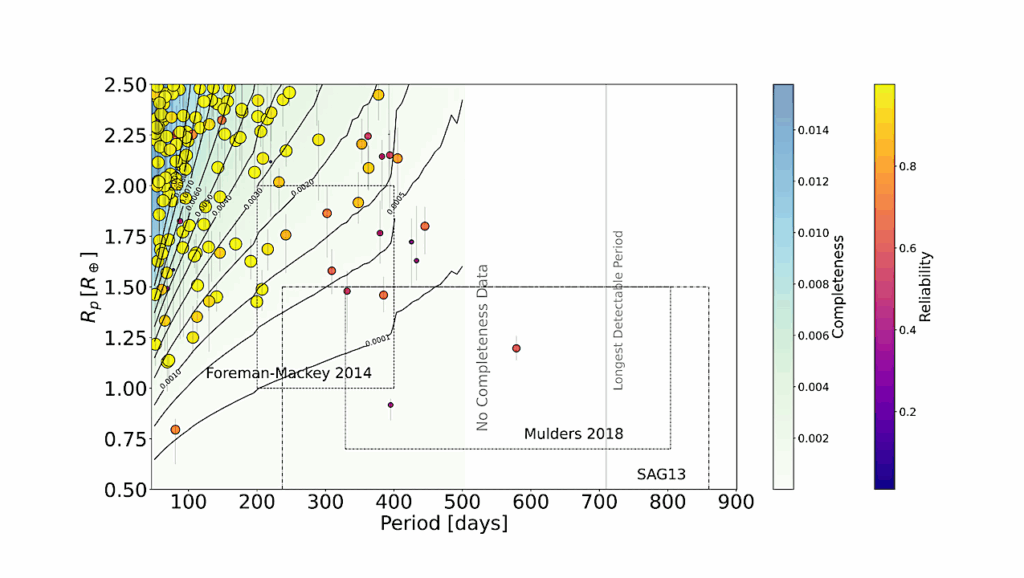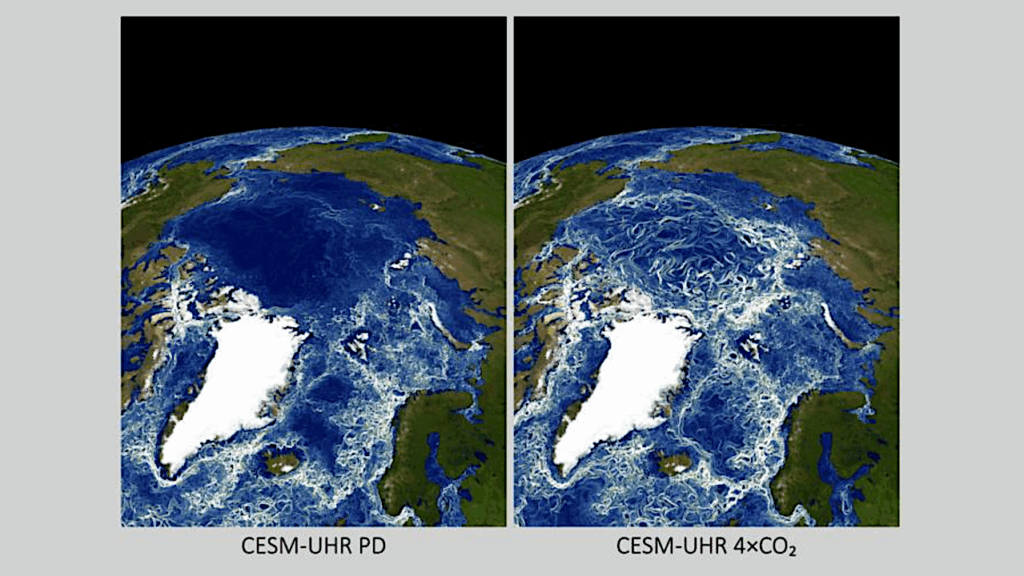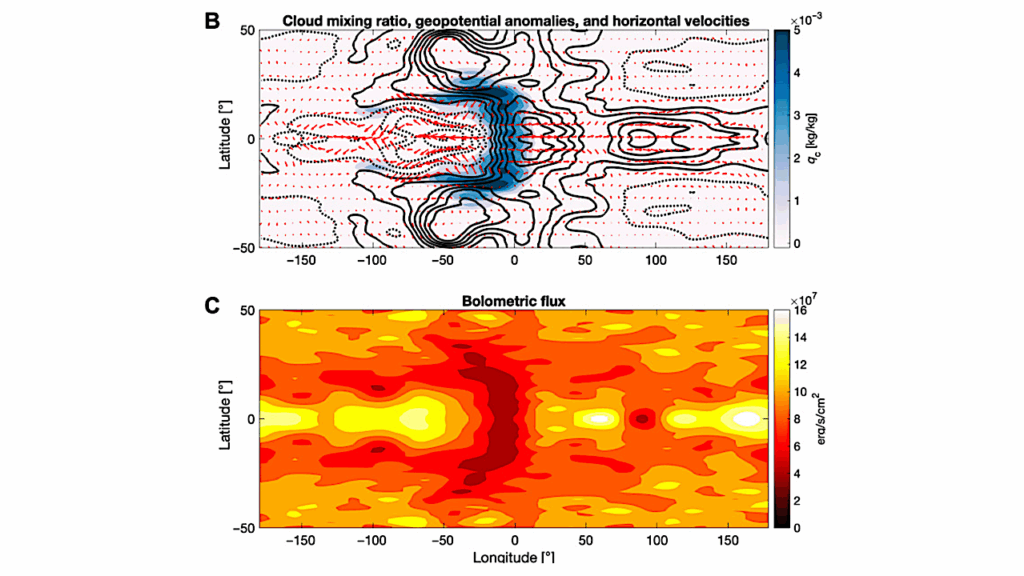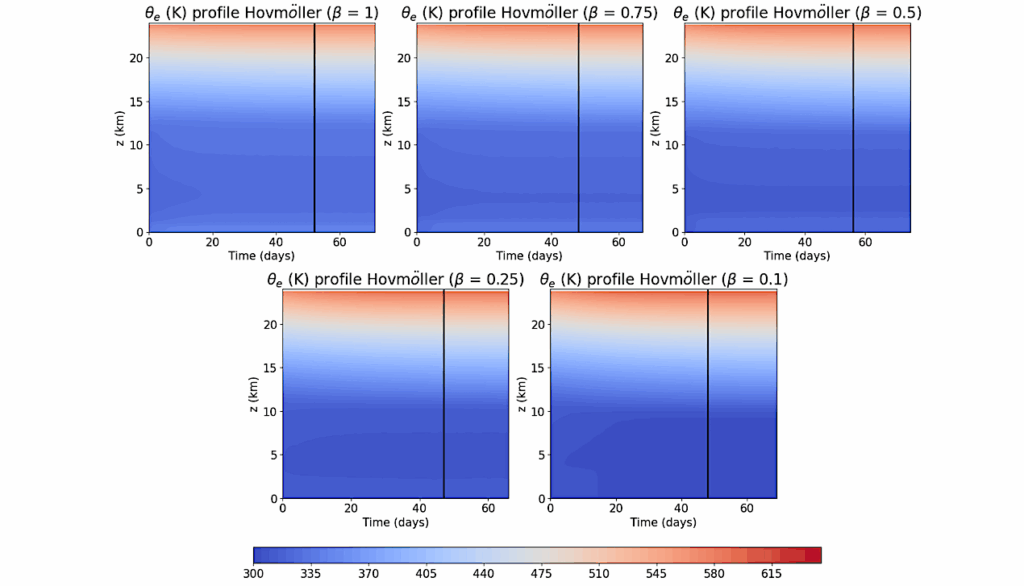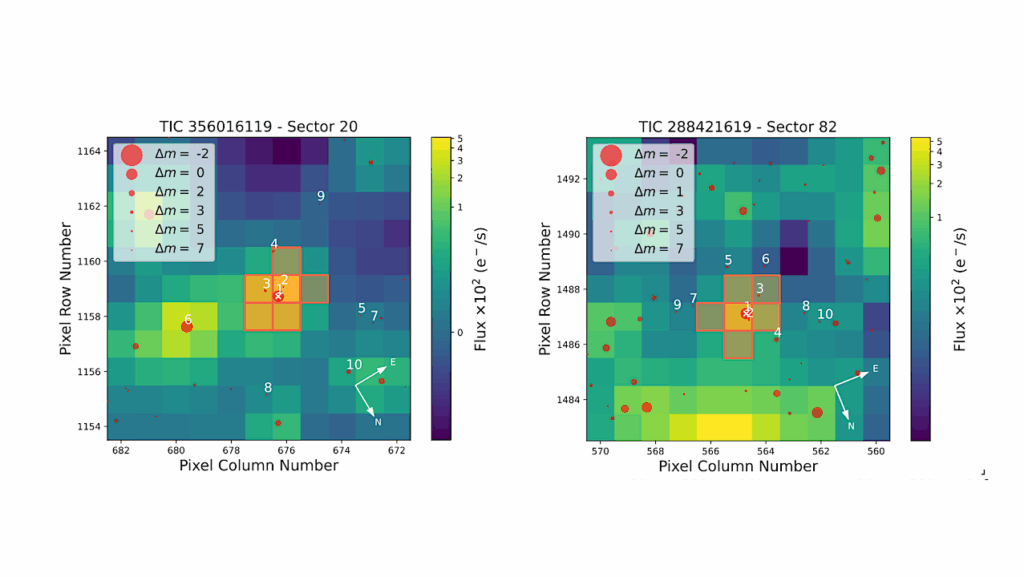Water Absorption In The Transmission Spectrum Of The Water-world Candidate GJ9827d
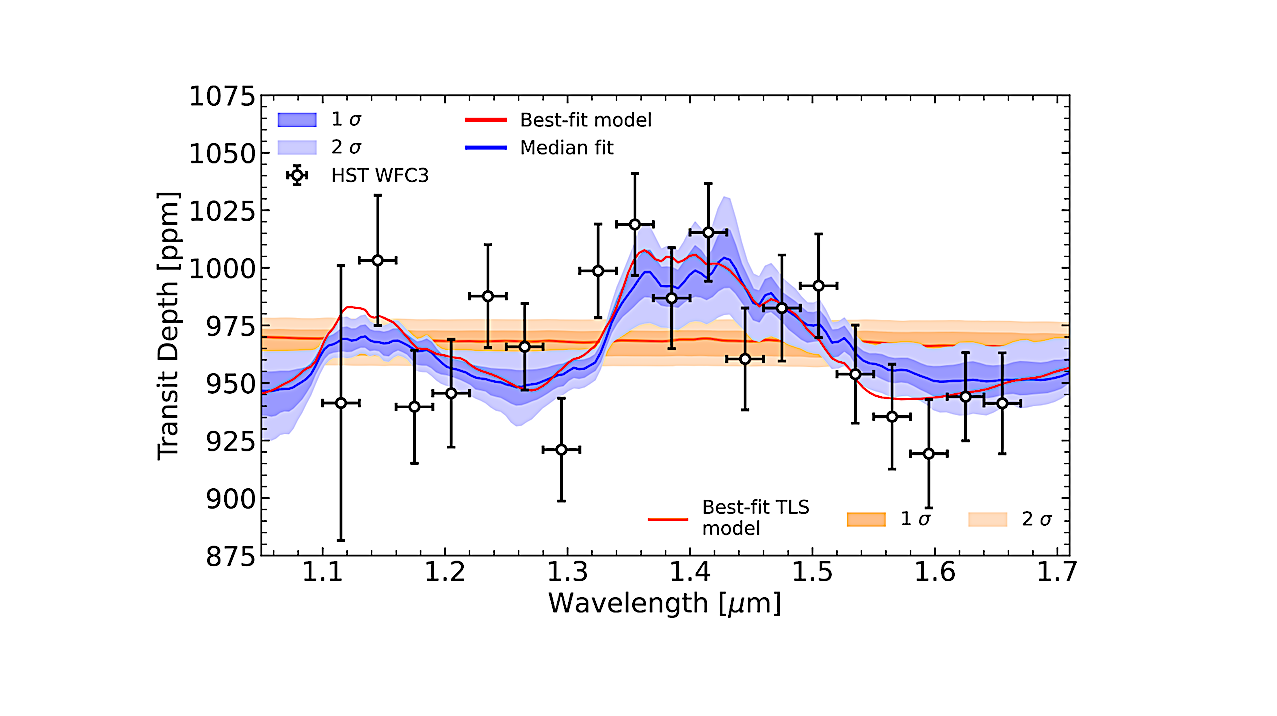
Recent work on the characterization of small exoplanets has allowed us to accumulate growing evidence that the sub-Neptunes with radii greater than ∼2.5R⊕ often host H2/He-dominated atmospheres both from measurements of their low bulk densities and direct detections of their low mean-molecular-mass atmospheres.
However, the smaller sub-Neptunes in the 1.5-2.2 R⊕ size regime are much less understood, and often have bulk densities that can be explained either by the H2/He-rich scenario, or by a volatile-dominated composition known as the “water world” scenario. Here, we report the detection of water vapor in the transmission spectrum of the 1.96±0.08 R⊕ sub-Neptune GJ9827d obtained with the Hubble Space Telescope.
We observed 11 HST/WFC3 transits of GJ9827d and find an absorption feature at 1.4μm in its transit spectrum, which is best explained (at 3.39σ) by the presence of water in GJ9827d’s atmosphere. We further show that this feature cannot be caused by unnoculted star spots during the transits by combining an analysis of the K2 photometry and transit light-source effect retrievals. We reveal that the water absorption feature can be similarly well explained by a small amount of water vapor in a cloudy H2/He atmosphere, or by a water vapor envelope on GJ9827d.
Given that recent studies have inferred an important mass-loss rate (>0.5M⊕/Gyr) for GJ9827d making it unlikely to retain a H-dominated envelope, our findings highlight GJ9827d as a promising water world candidate that could host a volatile-dominated atmosphere. This water detection also makes GJ9827d the smallest exoplanet with an atmospheric molecular detection to date.
Pierre-Alexis Roy, Björn Benneke, Caroline Piaulet, Michael A. Gully-Santiago, Ian J. M. Crossfield, Caroline V. Morley, Laura Kreidberg, Thomas Mikal-Evans, Jonathan Brande, Simon Delisle, Thomas P. Greene, Kevin K. Hardegree-Ullman, Travis Barman, Jessie L. Christiansen, Diana Dragomir, Jonathan J. Fortney, Andrew W. Howard, Molly R. Kosiarek, Joshua D. Lothringer
Comments: Published in ApJL, 11 pages, 6 figures
Subjects: Earth and Planetary Astrophysics (astro-ph.EP)
Cite as: arXiv:2309.10845 [astro-ph.EP] (or arXiv:2309.10845v1 [astro-ph.EP] for this version)
Journal reference: ApJL 954 L52 (2023)
Related DOI:
https://doi.org/10.3847/2041-8213/acebf0
Focus to learn more
Submission history
From: Pierre-Alexis Roy
[v1] Tue, 19 Sep 2023 18:00:03 UTC (2,231 KB)
https://arxiv.org/abs/2309.10845
Astrobiology



